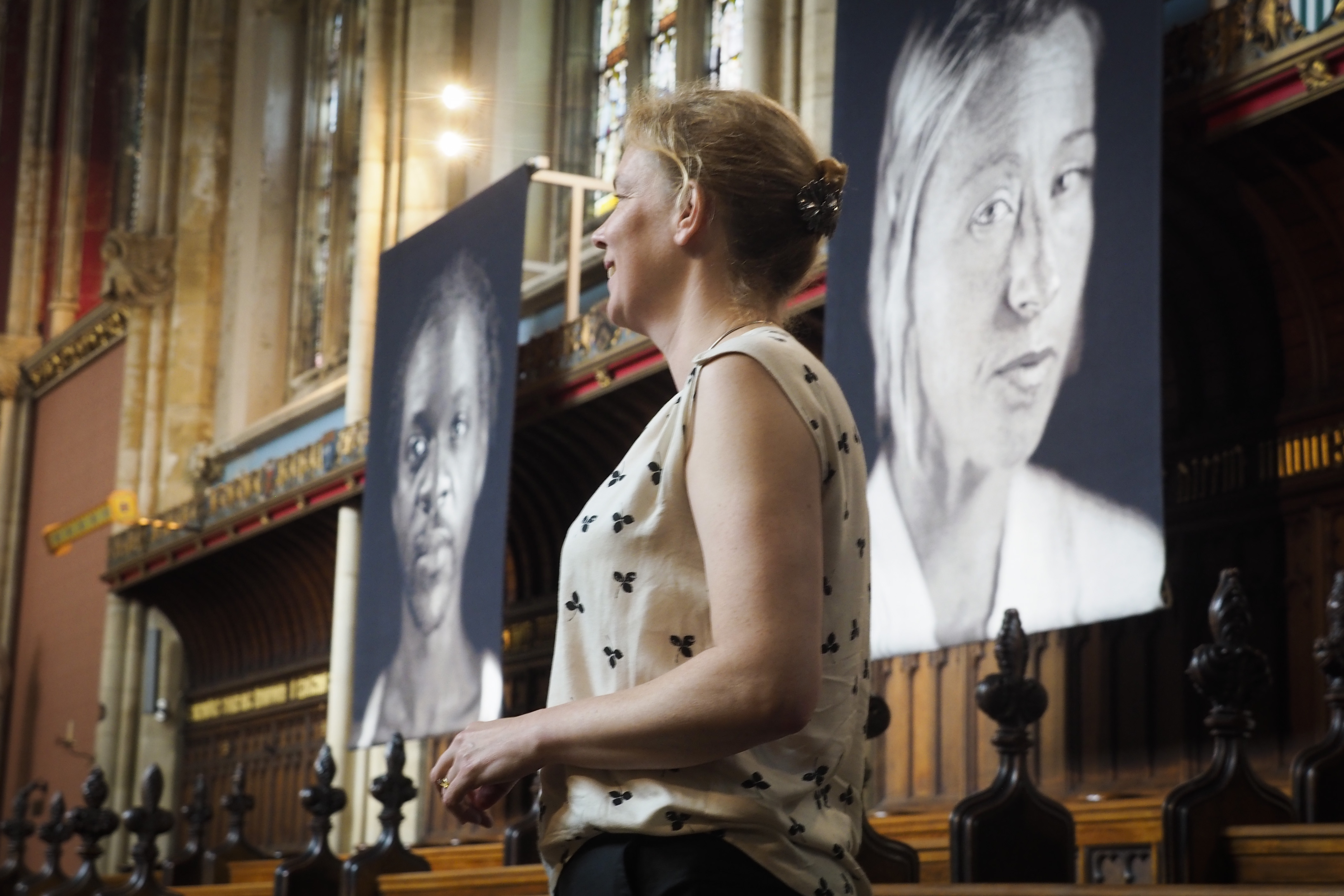Blog: Lucy Jenkins
The curator, who supports fundraising and cultural development at Ushaw College, writes about installing contemporary art in its high Gothic chapel
“Wow” is almost always the first word uttered by a first time visitor as they enter the stunning splendour of St Cuthberts Chapel at Ushaw. The ornately designed, high Gothic chapel, which opened in 1884, never fails to impress. But what were visitors going to say when we installed contemporary art there? In contrast to the riot of colour and ornamentation that makes the chapel so stunning, six black and white tapestry portraits by American artist Chuck Close now inhabit the choir stalls.
Over the past three years, Ushaw, County Durham. has undergone a major transformation. A Catholic seminary, training priests for over two centuries, it was a traditionally closed community dedicated to learning and spirituality. Now the doors of this 30-acre historic estate have been flung open to invite all to visit and enjoy the stunning architecture, collections and gardens. From modest beginnings of around 7,000 visitors in the first year, numbers rose to over 22,000 in 2016 and continue to grow.
Visitors are drawn to the previously hidden gem, the programme of music – from jazz and folk to organ recitals and choirs from across the country – and temporary exhibitions revealing treasures from the collection. This year however was the first time that we had introduced any exhibits into St Cuthberts Chapel.
The tapestries feature portrait heads of the Chuck Close’s friends – fellow artists Cindy Sherman, Kiki Smith, Ellen Gallagher and Lyle Harris, along with a self-portrait of Close himself and the most recognisable image – Barack Obama, former president of the United States of America.
We made the decision to show contemporary art here because we wanted visitors to look at the chapel differently – to see Ushaw as a place not just looking to the past but with a new future. The tapestries seemed a perfect combination of tradition and modernity. Tapestry making is an ancient craft and churches and cathedrals are often found with textile hangings and banners. These particular tapestries by Chuck Close are based on a series of daguerreotype photographs he took in the 1990s. The daguerreotype was the first publicly available photographic process and became popular worldwide from 1839. The method of making the tapestries however involved the latest technology and digital techniques.
“It’s probably sometimes six or seven totally different tapestries before we get what we want.”
The silver-coated daguerreotype plates were scanned at high resolution and translated into digital files suitable for weaving. This innovative technology, created by Don Farnsworth of Magnolia Editions, enables an electronic Jacquard loom to weave a complex, mosaic-like network of colour combinations. Test strips are woven at the factory and the digital files are adjusted to play up different colours, shades and threads. Close says that with the tapestries “as much thought and manipulation and altering of an image has taken place as you can see in a record of a painting” and so “it’s probably sometimes six or seven totally different tapestries before we get what we want”.
When you see the tapestries from afar it’s initially easy to think that they are black and white photographs printed onto canvas. As you get closer however you can see the intricate weave of thousands of different coloured threads. The tapestries are over two metres high so there is an amazing level of detail in the faces.
Once they were hung in the chapel we were thrilled to see the dramatic impact we had hoped for and overwhelmingly the response from visitors has been enormously positive. We have seen new people who are fans of Close’s work visit specially to see them, while regular visitors have told us how stunning they look.
We are delighted to see a space previously reserved for a few is now populated by a diverse and compelling congregation.
Chuck Close Tapestries are on display until 30 Sept

Leave a reply
Your email address will not be published.